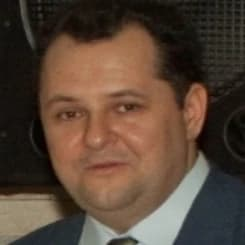Advances in Welding Process and Materials (2nd Edition)
A special issue of Materials (ISSN 1996-1944). This special issue belongs to the section "Manufacturing Processes and Systems".
Deadline for manuscript submissions: closed (20 March 2024) | Viewed by 2381
Special Issue Editors
Interests: processing and characterization of advanced materials; amorphous and nanocrystalline alloys; metals and alloys; welding and brazing of advanced materials
Special Issues, Collections and Topics in MDPI journals
Interests: advanced materials; material characterization; composite material; electron microscope; metal analysis alloys; biomedical alloys; materials engineering; materials testing; failure analysis
Interests: joining, manufacturing engineering; advanced welding and joining technologies; welding and joining of similar and dissimilar metals, additive manufacturing, metal-polymer hybrid joints, friction riveting, stress concentrations, fatigue
Special Issue Information
Dear Colleagues,
Recent developments in the engineering industry require new and advanced materials with special properties. Welding and joining these new materials present a major challenge to engineers and technicians involved in product design and manufacturing. Therefore, new material research should be conducted hand in hand with work on weldability and joining capacity aspects, as well as the development of new welding techniques. At the same time, a better understanding of the relationship between the microstructure and mechanical properties of the brazed or welded joints will provide useful information for material development activities both in conventional and new material areas.
The aim of this Special Issue is to provide a platform for researchers, engineers, academicians, and industrial professionals from all over the world to present their research results and development activities in the field of the welding and joining of both advanced and conventional engineering materials. You can view the first volume here: https://www.mdpi.com/journal/materials/special_issues/BG1CJRFSY4
For this Special Issue, research areas may include (but are not limited to) the following:
- New joining technologies
- Quality of welded joints and welded structures
- Modeling and simulation of welding processes
- Specific problems in advanced materials joining
- Mechanical and structural characterization of advanced materials and joints
- Engineering applications of surface coatings
- Damage to metal and non-metal structures
Dr. Cosmin Codrean
Guest Editor
Dr. Anamaria Feier
Dr. Carmen Opriș
Guest Editor Assistants
Manuscript Submission Information
Manuscripts should be submitted online at www.mdpi.com by registering and logging in to this website. Once you are registered, click here to go to the submission form. Manuscripts can be submitted until the deadline. All submissions that pass pre-check are peer-reviewed. Accepted papers will be published continuously in the journal (as soon as accepted) and will be listed together on the special issue website. Research articles, review articles as well as short communications are invited. For planned papers, a title and short abstract (about 100 words) can be sent to the Editorial Office for announcement on this website.
Submitted manuscripts should not have been published previously, nor be under consideration for publication elsewhere (except conference proceedings papers). All manuscripts are thoroughly refereed through a single-blind peer-review process. A guide for authors and other relevant information for submission of manuscripts is available on the Instructions for Authors page. Materials is an international peer-reviewed open access semimonthly journal published by MDPI.
Please visit the Instructions for Authors page before submitting a manuscript. The Article Processing Charge (APC) for publication in this open access journal is 2600 CHF (Swiss Francs). Submitted papers should be well formatted and use good English. Authors may use MDPI's English editing service prior to publication or during author revisions.
Keywords
- joining technologies
- welding process
- quality of welded joints
- modelling and simulation
- advanced materials
- microstructure
- mechanical properties
- surface coatings
Related Special Issue
- Advances in Welding Process and Materials in Materials (12 articles)








